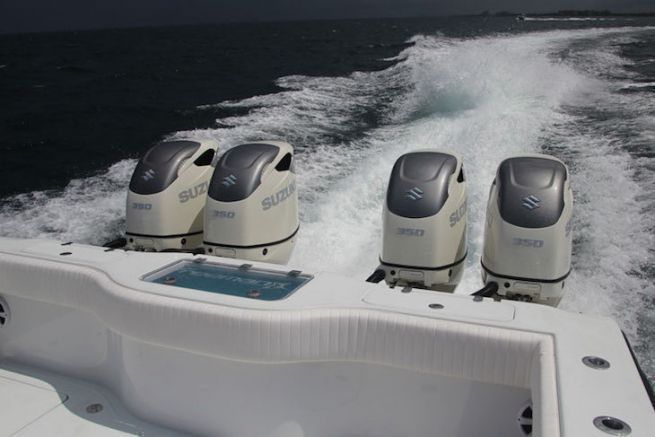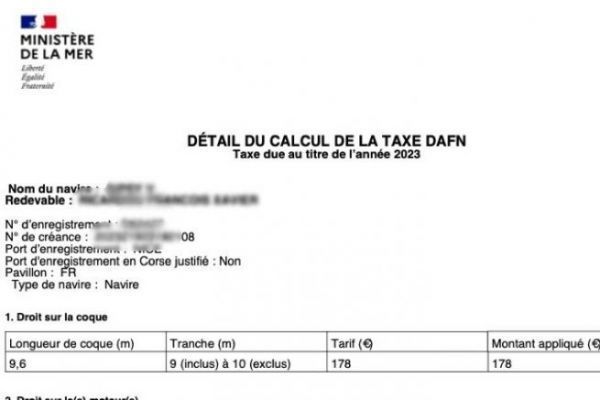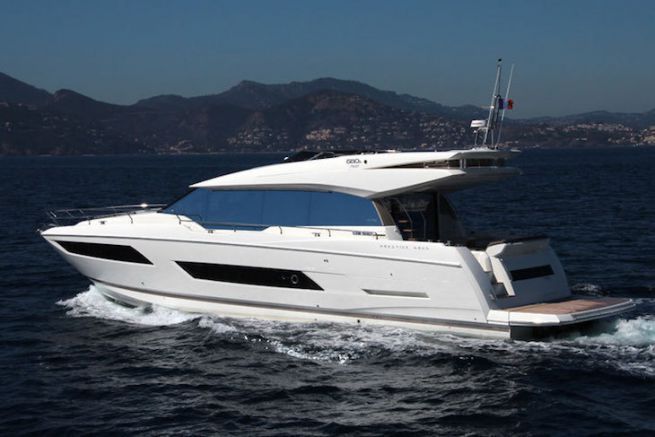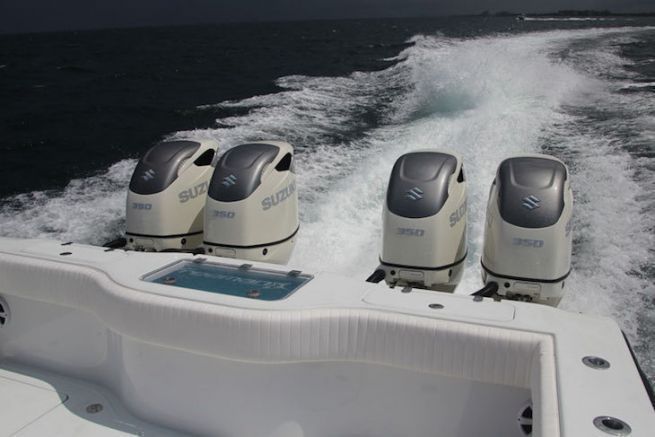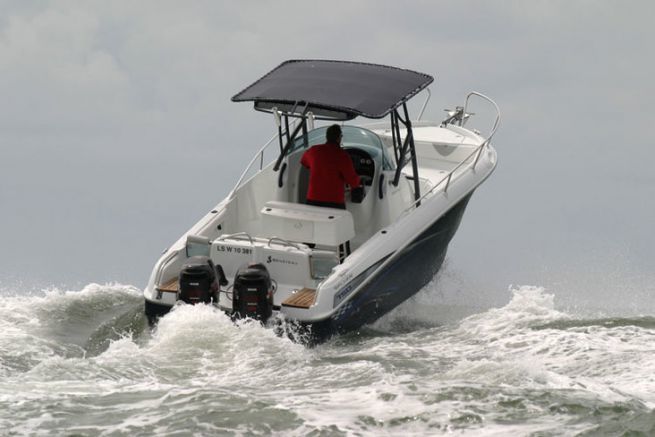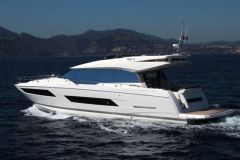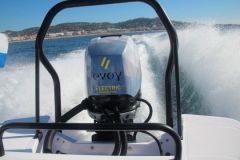For registered vessels of 7 m or more, motorized or not the calculation is based on the length of the vessel's hull, and/or, if applicable, the administrative power of its engines over 5 hp. For units of less than 7 m, but more than 22 HP a TAEMUP is also applied. The amounts of hull and engine power duties are then added together to produce a global sum.
Vessel hull length duty
A tax applies to the length of your hull, as soon as it exceeds 7 m. Here are the rates:
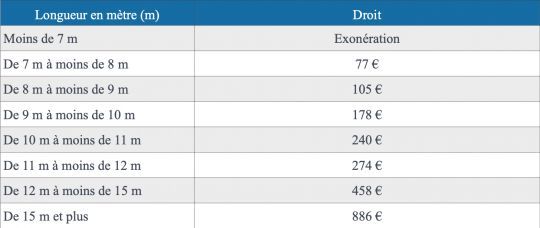
For chartered vessels less than 7 meters long with an engine equal to or greater than 22 HP . The tax depends on the engine's administrative rating. The tax applies from 6 e Administrative CV.
Engine duty (administrative power)
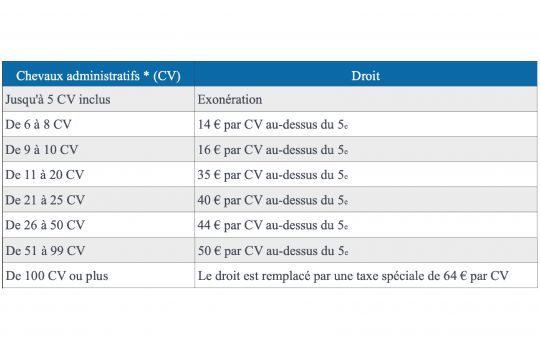
Example for a petrol outboard: The administrative power of a 225 hp Suzuki outboard is 20.71 HP. The francisation tax is ?525.
Example for a diesel inboard engine: The administrative power of a 225 hp Volvo Penta inboard is 14.7 HP. The tax is ?315.
NB: Fiscal horsepower is always rounded down to the nearest horse.
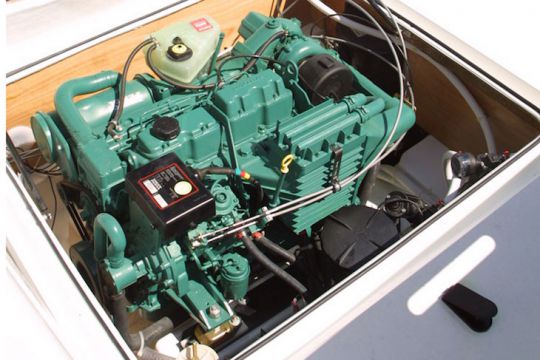
For personal watercraft (PWC) with a power rating of 90 kW or more, the tax is calculated according to the power rating:
- from 90 kW to 159 kW: ?3 per kW or fraction thereof, starting from the first kW ;
- from 160 kW: ?4 per kW or fraction of kW, starting from the first kW.
Is considered as personal watercraft any craft with a hull length of less than 4 m, equipped with an internal combustion engine that drives a turbine as its main source of propulsion, and designed to be maneuvered by one or more people sitting, standing or kneeling on the hull (e.g. jet skis, jet skis, etc.).
How do you calculate the administrative power of your engines?
The calculation is different for internal combustion engines and electric motors. For internal combustion engines, the authorities base the calculation on the engine's cubic capacity, and for electric motors on its power:
- For two- or four-stroke petrol or two-stroke diesel engines displacement (in liters) multiplied by 5.727
- For four-stroke diesel engines displacement (in liters) multiplied by 4.009
- For motors powered exclusively by electrical energy kW divided by 5.14895
In the case of several motors
The calculation is different for inboard and outboard engines. In the first case, the administrative power used is the sum of the cumulative powers.
Example: If you have two 20 hp inboard engines, you'll need to calculate: 20 + 20 = 40 hp. The tax is ?44 per hp, so from the 6th onwards the sum to be paid will be 35 x 44 = ?1,540.
In the case of outboard motors, the tax is calculated for each motor and then added together.
Example: If you have two outboard motors with 20 HP, you'll need to calculate ?35 per tax horse from the 6th onwards, for each motor, i.e. 15x35 + 15x35 = ?1050.
For large yachts
Since 2018, a specific scale exists for boats over 30 m and more and with a real engine power of 750 KW and more.
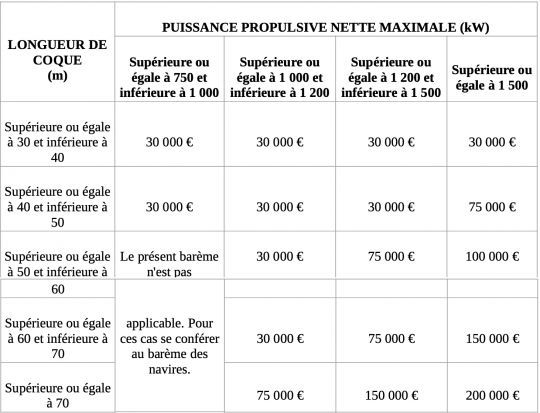
Allowance for obsolescence
As of January 1, 2019, the French Finance Act provides for a freeze on the obsolescence allowance applied to the francisation and navigation fee (DAFN). Read the article: What difference does it make?

 /
/ 